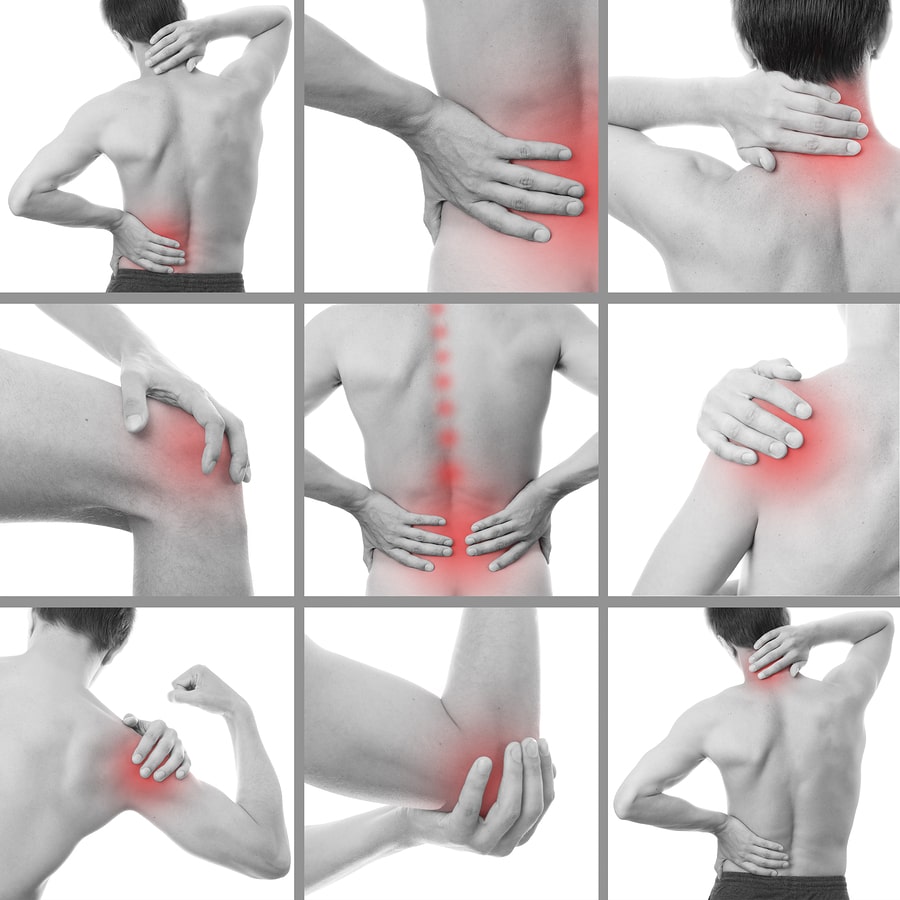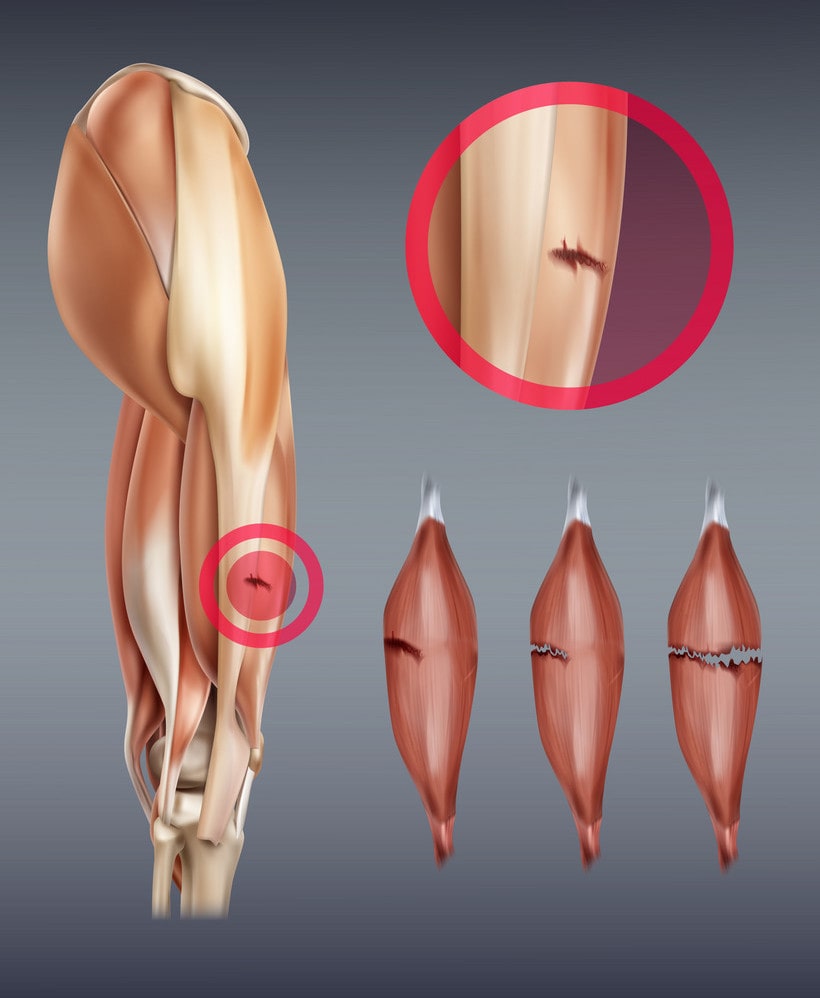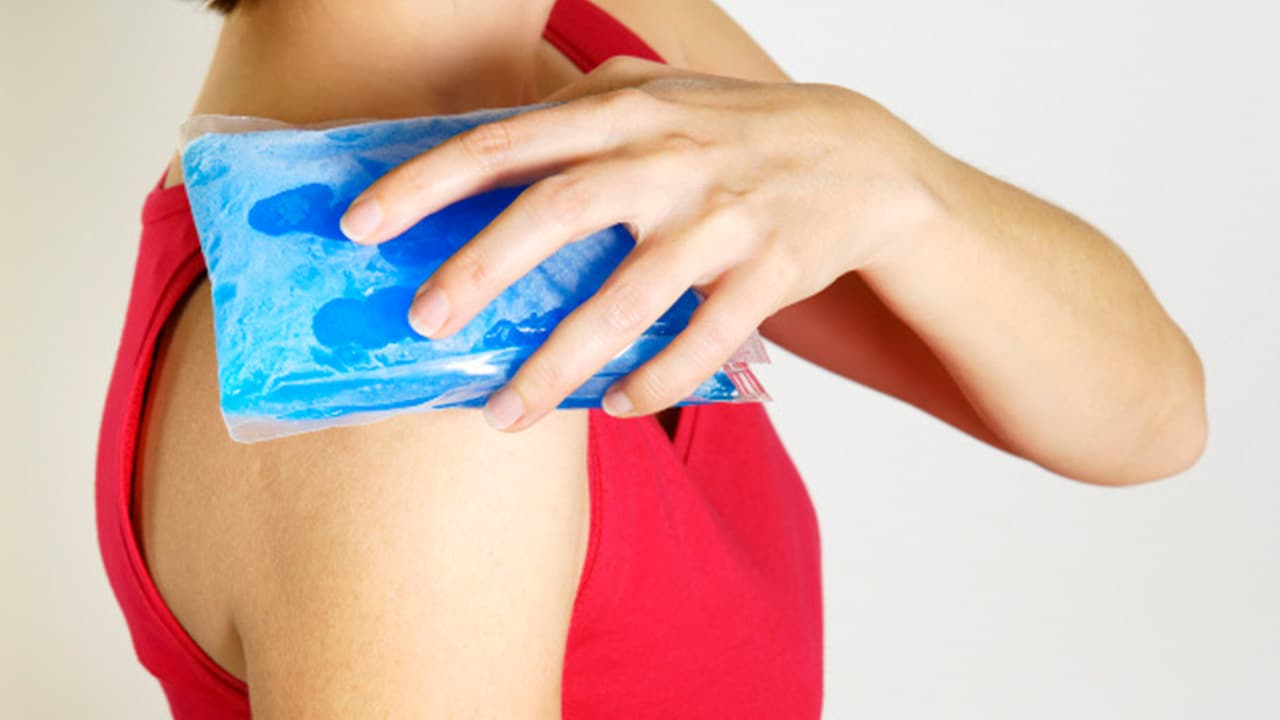SOLVE YOUR MUSCLES STRAIN PROBLEMS
A muscle strain is an injury to a muscle or a tendon, occurs when your muscle is overstretched or torn. Strains can take place in any muscle. When you overuse muscle, or improper use of muscle can arise in this situation.
In the minor case, a muscle or tendon is overstretched, but in the major case, partial or complete tears can occur in the muscle. Sometimes a muscle strain or pulled muscle can cause pain and may freeze the movement within the affected muscle group. They are very much common in your lower back, neck, shoulder, and hamstring.

SYMPTOMS OF MUSCLE STRAINS
Signs and symptoms of a muscle strain can vary as per the severity of the injury. It may include:
- Pain or tenderness
- Redness or bruising or discoloration
- Limited motion or range of movement
- Muscle spasms
- Swelling
- Muscle weakness
- Soreness
- Muscle spasms
- Stiffness
The symptoms of mild to moderate muscle strains generally go away within a few weeks. More severe strains may take months to heal.
CAUSES
A severe muscle strain comes up when your muscle tears suddenly and unexpectedly. Such tears can happen either from injuries or trauma.
Also, acute strains can be caused by using poor body mechanics to lift something heavy. Chronic muscle strains can result in muscle injuries by doing the same motion over and over.
This strain can be due to:
- Not warming up properly before physical activity
- Poor flexibility
- Poor conditioning
- Overexertion
- Fatigue
A critical strain injury can happen when you:
- Slip or lose your footing
- Jump
- Run
- Throw something
- Lift something heavy
- Holding your back or neck in an awkward position
- Sports like rowing, tennis, golf, or baseball
According to Johns Hopkins Medicine, muscle strains can even occur from walking. In lower temperatures, your muscles become stiffer and there are chances of getting acute muscle strains in cold weather.

TREATMENT
Mild to moderate strains can be efficiently treated at home with ice, heat, and anti-inflammatory medications. Acute strains or tears may require medical treatment or surgical repair.
For immediate self-care of a muscle strain, try the R.I.C.E. approach stands for rest, ice, compression, elevation.
Rest – Avoid activities that cause pain, swelling, or discomfort. If any movement causes an increase in pain, avoid such activities. Slowly do your physical activities. Also, start slowly using the affected muscle group. Don’t take too much rest that can cause muscles to become weak.
Ice – Apply ice immediately on the affected area after the injury. This will minimize swelling. Don’t put ice directly on your skin, make sure you will use an ice pack or wrap ice in a towel.
Repeat every two to three hours for the first few days after the injury. For the next several days, apply ice every four hours. Keep it on your muscle for 15 to 20 minutes each time.
Compression – To stop swelling, compress the affected area with an elastic bandage until the swelling stops. Don’t wrap the area too tightly, you can reduce your blood circulation. Loosen the wrap if the pain increases.
Elevation – Keep the injured muscle area raised above the level of your heart, at night. This will help reduce swelling.
Use an over-the-counter medication – An anti-inflammatory medication ibuprofen (Advil) will help keep pain and swelling down. Acetaminophen (Tylenol) also helps with pain.
Apply heat to the muscle – After three days, apply heat to the muscle various times a day. This will bring blood circulation to the area for healing.
Don’t rest for too long – Don’t rest your muscles for too long. This can originate from stiffness and weakness. Slowly increase your stretching and level of activity.
Warm up before exercising – Ensure that you will perform stretching and warm-up activities before doing any exercise. This will increase blood flow to your muscles and decrease your risk of injury. Also, regular exercise can keep your muscles healthy and strong.
Similarly, after your workout or physical activity do stretching for some time that can prevent muscle stiffness. Start slowly.
You must understand your body’s restrictions or limitations of movement. If something doesn’t feel right during an activity, stop immediately.
If you have serious muscle strain, you need medical treatment, physical therapy, or surgery. A physical therapist can help you to improve the stability and strength of the injured joint or limb. For some injuries, such as a torn tendon your doctor may suggest surgery.
RISK FACTORS
Participating in sports such as soccer, football, hockey, boxing, and wrestling can increase your risk of muscle strains.
Legs and ankles – Sports such as hurdling and basketball, can be particularly tough on the Achilles tendon in your ankle. The sports with quick starts and jumping increase your risk of strain.
Hands – Gymnastics or golf, can also increase your risk of muscle strains in your hands.
Elbows – Elbow strains are frequently caused by throwing sports and racquet sports.
These surgeries are suggested only if your spine specialist has exhausted all other non-invasive treatment options. The main goal of these surgeries is to decompress the spine and to relieve the pressure on the spinal canal.

LEARN HOW TO PREVENT MUSCLE STRAINS :-
Reduce your chances of straining a muscle. Just take some basic precautions which are helpful for you:
- Don’t sit in one position for too long.
- Take breaks to move and change position.
- Use a chair that gives good support for your lower back, or you can use a pillow for support.
- Keep your knees level with your hips.
- Carry good posture while standing and sitting. This will decrease stress on your back muscles.
- Pick up objects carefully. While lifting any object or your bag, keep your back straight, bend at the knee and then pick up your luggage.
- Try to hold the weight close to your body. Don’t lift and twist at the same time.
- Take precautions such as holding guardrail on stairways, avoiding slippery surfaces, and keeping your floors uncluttered.
- If you are overweight, try to lose your body weight
- Wear proper-fitting shoes.
Always keep in mind one fact that is, “Prevention Is Better Than Cure.”
Mild to moderate strains, home treatments are sufficient. Seek a doctor or you can even contact Specialty Care Clinics if any of the following happens:
- If your pain becomes intolerable.
- You are experiencing numbness or tingling in the injured area.
- Blood coming from your injury.
- You feel that you can’t walk.
- Facing difficulties while moving your arms or legs.
Specialty Care Clinics provides high-quality, cost-effective, and emergency healthcare treatment in the communities where we serve.
Our board-certified and licensed pain management doctors are experts in treating all types of pain which you may experience. Our doctor may advise physical therapy to help strengthen the muscle and restore movement.
We are located at multiple locations in Texas. Call us on 469-545-9983 to book an appointment with our specialists today.
